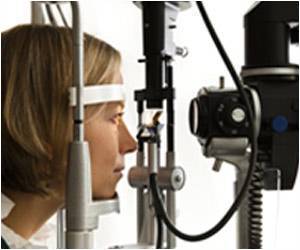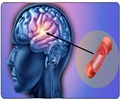The coordination of dozens of muscles is required for the simple act of picking up a pencil.

The findings, published this week in the Proceedings of the National Academy of Sciences, could lead to improved rehabilitation for stroke patients, as well as a better understanding of how the motor cortex coordinates movements, says Emilio Bizzi, an Institute Professor at MIT and senior author of the paper.
"The cortex is responsible for motor learning and for controlling movement, so we want to understand what's going on there," says Bizzi, who is a member of the McGovern Institute for Brain Research at MIT. "How does the cortex translate an idea to move into a series of commands to accomplish a task?"
Coordinated control
One way to explore motor cortical functions is to study how motor patterns are disrupted in stroke patients who suffered damage to the motor areas.
In 2009, Bizzi and his colleagues first identified muscle synergies in the arms of people who had suffered mild strokes by measuring electrical activity in each muscle as the patients moved. Then, by utilizing a specially designed factorization algorithm, the researchers identified characteristic muscle synergies in both the stroke-affected and unaffected arms.
Advertisement
In the 2009 study, and again in the new paper, the researchers showed that synergies in the affected arms of patients who suffered mild strokes in the cortex are very similar to those seen in their unaffected arms even though the muscle activation patterns are different. This shows that muscle synergies are structured within the spinal cord, and that cortical stroke alters the ability of the brain to activate these synergies in the appropriate combinations.
Advertisement
This phenomenon, known as fractionation, does not restore the synergies to what they would have looked like before the stroke. "These fractionations appear to be something totally new," says Vincent Cheung, a research scientist at the McGovern Institute and lead author of the new PNAS paper. "The conjecture would be that these fragments could be a way that the nervous system tries to adapt to the injury, but we have to do further studies to confirm that."
Toward better rehabilitation
The researchers believe that these patterns of synergies, which are determined by both the severity of the deficit and the time since the stroke occurred, could be used as markers to more fully describe individual patients' impaired status. "In some of the patients, we see a mixture of these patterns. So you can have severe but chronic patients, for instance, who show both merging and fractionation," Cheung says.
The findings could also help doctors design better rehabilitation programs. The MIT team is now working with several hospitals to establish new therapeutic protocols based on the discovered markers.
About 700,000 people suffer strokes in the United States every year, and many different rehabilitation programs exist to treat them. Choosing one is currently more of an art than a science, Bizzi says. "There is a great deal of need to sharpen current procedures for rehabilitation by turning to principles derived from the most advanced brain research," he says. "It is very likely that different strategies of rehabilitation will have to be used in patients who have one type of marker versus another."
Source-Eurekalert















